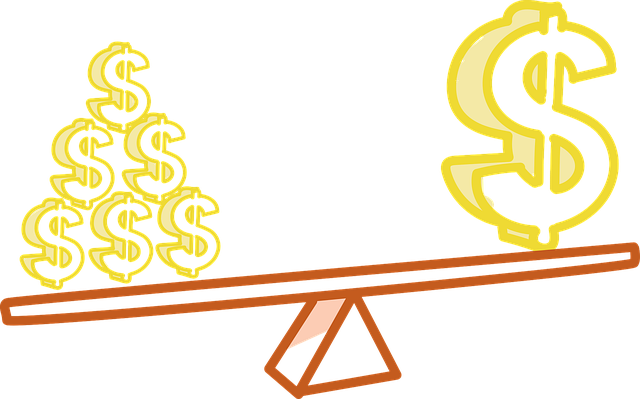What is Financial Leverage in Small Business?
Financial leverage refers to using borrowed funds to raise capital and increase the potential return on investment. In small business contexts, this involves utilizing debt financing to acquire assets, expand operations, or fund new opportunities. By leveraging debt, businesses can achieve growth objectives without depleting their equity.
To measure financial leverage, various ratios are utilized, including the Debt Equity Ratio and the equity multiplier, which help analyze how assets are financed and the implications of different equity multiplier values on a firm’s financial strategy. While financial leverage can amplify returns, it also magnifies risks. If the returns on leveraged investments exceed the cost of debt, businesses benefit from increased profitability. Conversely, underperforming investments can lead to financial losses and strain cash flow due to fixed debt obligations. Thus, understanding and managing financial leverage is essential for long-term success.
Types of Leverage
- Operating Leverage: Focuses on using fixed costs to enhance operational efficiency and reduce per-unit costs. Businesses with high fixed costs relative to variable costs typically benefit from operating leverage when sales volume increases.
- Financial Leverage: Centers on using borrowed capital to fund investments, enabling businesses to achieve higher returns on equity. Financial leverage requires careful planning to balance risk and reward.
- Consumer Leverage Ratio: Measures household debt relative to disposable income, highlighting how much individuals rely on borrowed funds. While distinct from business leverage, it provides insight into debt management practices.
Real-World Applications
Financial leverage finds practical application in various small business scenarios:
- Expansion Projects: Borrowing money to purchase new equipment, facilities, or inventory to meet growing demand. This strategy can magnify potential profits but also comes with the obligation to repay the loans regardless of investment performance.
- Marketing Initiatives: Using loans to fund campaigns that drive brand awareness and sales.
- Working Capital Management: Leveraging credit lines to manage short-term operational expenses and maintain liquidity.
How does Financial Leverage work?
Financial leverage works by enabling businesses to invest in growth opportunities without relying solely on their equity. When businesses borrow money, they can allocate additional funds toward high-return projects. For leverage to be effective, the returns generated must exceed the cost of debt—including interest rates and other financing costs.
Various ratios are used to measure financial leverage. The debt-to-equity ratio is the most widely recognized, but other ratios, such as the equity multiplier, are also significant in analyzing a company’s leverage. These ratios help business owners understand how assets are financed and the implications of different equity multiplier values for a firm’s financial strategy.
The effects of financial leverage are amplified in both directions. While successful investments lead to increased profitability, unsuccessful ventures can result in higher losses due to fixed debt obligations. Therefore, leveraging borrowed money requires careful planning and risk assessment.
Analyzing Leverage in Financial Statements
- Balance Sheet: Highlights the company’s total debt and equity positions, offering insights into its financial leverage.
- Income Statement: Reflects interest expenses and their impact on the company’s earnings.
- Cash Flow Statement: Tracks the effect of debt on liquidity and operational sustainability.
Small Business Financial Leverage Example
To illustrate how financial leverage works, consider a fictional small business:
Scenario: Sarah, a bakery owner, wants to expand her business by opening a second location. She estimates the new location will cost $200,000, including renovations, equipment, and initial inventory. Sarah has $50,000 in savings and decides to borrow $150,000 at an interest rate of 6% annually.
Investment Details:
- Loan amount: $150,000
- Annual interest: $9,000
- Estimated annual revenue from the new location: $300,000
- Estimated annual operating costs (excluding loan interest): $240,000
- Importance of managing operating expenses: Fluctuating revenues can lead to financial strain if Sarah cannot meet her operating expenses, impacting her ability to manage debt relative to earnings.
Outcome:
- Total annual cost (operating costs + loan interest): $249,000
- Annual profit: $300,000 – $249,000 = $51,000
- Return on investment (ROI): $51,000 / $50,000 = 102%
Sarah’s bakery expands significantly by using financial leverage, generating a high ROI. However, if the new location underperformed and only generated $240,000 in revenue, the business would barely break even, highlighting the risks of leveraging debt.
How can I manage Financial Leverage for my Business?
Effective financial leverage management is crucial for balancing growth with financial stability. Small businesses should prioritize the following strategies:
Financial Leverage and Operating Income
Financial leverage enhances operating income by allowing businesses to invest in growth initiatives. For example, asset-backed lending can finance equipment purchases, boosting production capacity and sales. However, poorly performing investments increase the risk of losses, making it essential to analyze potential returns and costs.
Managing Financial Leverage
- Debt Management: Regularly monitor debt levels and avoid over-leverage to maintain a healthy financial position.
- Financial Planning: Develop budgets and investment strategies aligned with business goals to optimize resource allocation.
- Risk Mitigation: Diversify investments and maintain contingency plans to address market volatility.
Best Practices for Effective Leverage
- Borrow only when the potential return exceeds the cost of debt.
- Regularly evaluate leverage ratios and adjust strategies to improve financial stability.
- Diversify funding sources and foster strong relationships with lenders to secure favorable terms.
How do I calculate Financial Leverage for my Business?
Understanding and measuring financial leverage is key to controlling debt and equity balances. Key metrics include:
Debt-to-Equity Ratio
Calculated as total liabilities divided by shareholder equity, this ratio assesses the proportion of debt to equity in the company’s capital structure. A ratio below 2.0 is generally considered safe.
Return on Equity (ROE)
This metric is calculated as net income divided by shareholder equity. It measures a business’s efficiency in generating profits from its equity.
Return on Assets (ROA)
ROA is calculated as net income divided by total assets. It indicates how effectively a business uses its assets to generate earnings.
Leverage Ratio
This ratio, calculated as total debt divided by total assets, evaluates how much a company relies on debt financing.
Interest Coverage Ratio
Calculated as earnings before interest and taxes (EBIT) divided by interest expense, this ratio measures a company’s ability to cover its interest obligations.
What are the benefits of Small Business Financial Leverage?
Financial leverage allows businesses to access capital for growth initiatives without depleting equity reserves. When leveraged investments yield high returns, they amplify profits, enabling businesses to achieve greater profitability.
Additionally, interest payments on debt are often tax-deductible, reducing taxable income and improving cash flow. These advantages make financial leverage a valuable tool for businesses seeking to expand.
What are the risks of Financial Leverage in Business?
While financial leverage can drive growth, it also introduces significant risks. Excessive debt levels can lead to default or financial distress, jeopardizing the business’s stability. Fixed interest obligations may strain cash flow during periods of low revenue, making it difficult to meet operating expenses. Furthermore, market volatility can render leveraged investments unprofitable, underscoring the need for careful planning and risk management.
Financial Leverage Pros & Cons
Pros:
- Access to capital for growth initiatives.
- Amplifies profits when investments perform well.
- Tax-deductible interest payments improve cash flow.
Cons:
- Risk of default and financial distress with excessive debt.
- Fixed interest obligations strain cash flow during downturns.
- Market volatility increases the risk of unprofitable investments.
How can I apply for Debt Financing for Financial Leverage?
The following small business loans are available through our lender network:
- Bad credit business loans.
- Business line of credit.
- Business loans for women.
- Business term loans.
- Equipment financing.
- Invoice factoring.
- Merchant cash advance.
- Revenue-based business loan.
- SBA loans.
- Working capital loans.
- ERTC advance.
You can apply for a small business loan through our lender network by following these steps:
Step 1 – Apply online in a few minutes: Use our simple online application to submit a request for business funding. If you need any help along the way, give us a call, chat, or email.
Step 2 – Get expert advice on loan options: An expert, knowledgeable account executive will walk you through all the fine details and requirements. This is to ensure you have all the info you need.
Step 3 – Finalize your application and get funded: Once your funding has been approved and closed, the lender sends the funds to your account so you can start using them to grow your business.
Frequently Asked Questions
Here are the most common questions about financial leverage in small business.
Why is Financial Leverage important for Businesses?
Financial leverage accelerates growth and innovation by providing access to upfront capital. Properly managed, it optimizes a company’s capital structure, enabling more efficient resource allocation. By leveraging debt, businesses can remain competitive and seize opportunities that equity financing alone cannot support.
What’s the difference between Financial & Operating Leverage?
Businesses leverage financial and operating leverage as different efforts to improve their performance. Each strategy targets different needs and produces different results.
Financial Leverage: Financial leverage involves borrowing funds to enhance a company’s return on equity. It involves obtaining external financing, such as loans or credit, to fund projects with the potential to generate high returns. The effectiveness of financial leverage depends on the investment’s ability to produce returns that exceed the cost of debt, including interest payments and associated fees. This type of leverage directly impacts net income by increasing the profit potential but also magnifies losses if the investment underperforms.
Operating Leverage: Operating leverage, on the other hand, examines a company’s cost structure, emphasizing the balance between fixed and variable costs. A business with high operating leverage has significant fixed costs relative to its variable costs, meaning that changes in sales volume can disproportionately affect operating income. High sales volumes can lead to increased profitability because fixed costs remain constant while revenue grows, but low sales volumes can result in financial strain due to the inability to cover fixed expenses.
Financial leverage and operating leverage are both tools for enhancing profitability, but they focus on different aspects of a business’s operations. Financial leverage centers on funding strategies and their impact on net income, while operating leverage addresses cost structures and their influence on operating income.
A company with high financial leverage takes on debt to achieve growth, increasing its financial risk, whereas a business with high operating leverage must manage the risk associated with fluctuating sales volumes. Combining both types of leverage requires careful coordination to avoid overexposure to financial risk while maximizing potential gains.
What is Consumer Leverage & how does it compare to Financial Leverage?
Consumer leverage pertains to personal debt relative to disposable income, reflecting household borrowing habits. In contrast, financial leverage applies to businesses using debt for investments. While both involve borrowing, the scale and purpose differ significantly.
What is Financial Leverage vs Margin?
Financial leverage is a broad concept that encompasses all forms of borrowing funds to amplify returns. Margin, a subset of financial leverage, involves borrowing funds specifically for trading or investing in financial securities. Margin accounts are more common in stock market activities, while financial leverage spans various business applications.
| Feature | Financial Leverage | Margin |
|---|---|---|
| Definition | The use of borrowed funds to amplify returns on investments. | Borrowing funds specifically for trading or investing. |
| Scope | Broad; includes all business applications. | Narrow; typically focused on financial securities. |
| Usage | Used in business operations, acquisitions, and expansions. | Primarily used in stock market activities. |
| Impact | Enhances return on equity or overall business profitability. | Enhances gains or losses in specific investments. |
| Risk | Affects overall financial stability of a business. | Limited to trading or investment portfolios. |
What Is a Good Financial Leverage Ratio?
A good financial leverage ratio depends on industry norms and risk tolerance. Generally, a debt-to-equity ratio below 2.0 is considered safe. Businesses must balance risk and return to determine an optimal ratio for their operations.
What is Financial Leverage in Small Business – Final Thoughts
Financial leverage is a powerful tool for small businesses, offering opportunities to drive growth and increase returns. However, it comes with risks that require careful planning and management.
By understanding and applying best practices, small business owners can optimize their capital structure and achieve long-term success. Leveraging the right strategies and funding options can help businesses maximize their potential while minimizing financial risks.
Contact us if you’re ready to apply for a small business loan. Our alternative financing experts can help you find the best funding options for financial leverage.
















